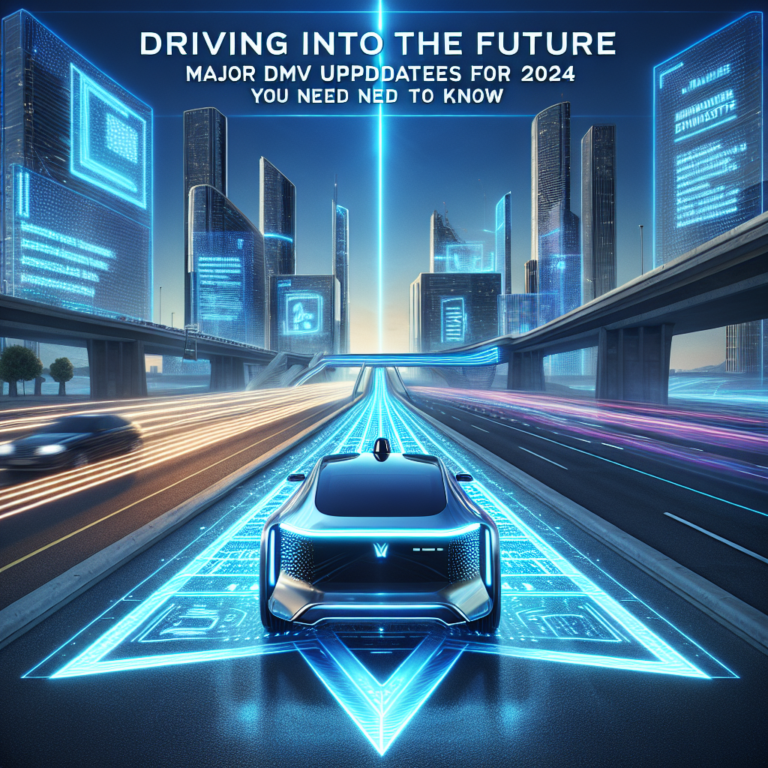As we approach 2024, significant changes and advancements are on the horizon for departments of motor vehicles (DMVs) across the United States. These updates aim to streamline processes, improve safety, and enhance the overall driving experience. Here’s what you need to know about the major DMV updates that will shape the future of driving.
1. Enhanced Digital Services
In a move to embrace digital transformation, many DMVs are expanding their online services. Starting in 2024, users can expect:
-
Complete Online Transactions: Many processes that traditionally required in-person visits—such as applying for a driver’s license, renewing registration, and even taking written tests—are becoming available online. States are investing in robust online platforms to facilitate these tasks.
- Mobile Apps: New DMV mobile applications will offer features like appointment scheduling, real-time wait times, and access to digital driver’s licenses. These apps aim to minimize time spent in line and simplify the interaction with DMV services.
2. Introduction of Digital IDs
Digital identification is on the rise. In 2024, several states will roll out pilot programs allowing residents to use digital IDs stored on their smartphones. These digital IDs will comply with strict security standards and allow users to prove their identity in various situations, including age verification, law enforcement, or even at the airports.
3. Increased Focus on Electric Vehicle (EV) Incentives
As the shift toward electric vehicles accelerates, many DMVs are implementing programs to support this movement:
-
EV Registration Programs: New procedures will streamline the registration process for electric vehicles, offering incentives such as reduced registration fees and expedited processing.
- Charging Station Information: DMVs will also become information hubs for EV owners, providing data on the growing network of electric vehicle charging stations, as well as updates on state and federal tax incentives for EV purchases.
4. Stricter Regulations on Distracted Driving
With the rise in smartphone use and in-car technology, concerns about distracted driving have surged. In 2024, several states are expected to introduce stricter laws aimed at reducing distractions behind the wheel:
-
Hands-Free Enforcement: New laws may mandate hands-free operation of devices while driving, with fines and penalties for non-compliance.
- Awareness Campaigns: In conjunction with new regulations, DMVs will launch public awareness campaigns about the dangers of distracted driving, employing social media and educational outreach to change driver behavior.
5. Innovations in Driver Education
To ensure that new drivers are better prepared to navigate increasingly complex roads, driver education programs are evolving:
-
Virtual Reality (VR) Training: Some states are experimenting with VR technologies in driver education, offering immersive experiences that simulate real driving scenarios and challenges.
- Updated Curriculum: An emphasis on defensive driving techniques and awareness of evolving road rules, especially regarding autonomous vehicles, will be integrated into new curriculums.
6. Cadillac of Safety: Autonomous Vehicle Regulations
As autonomous vehicle technology matures, states are working to establish comprehensive guidelines to ensure safety on the roads:
-
Testing Frameworks: In 2024, regulations are likely to be introduced to govern the testing of self-driving vehicles, including requirements for reporting accidents and software malfunctions.
- Licensing for AV Operators: Some jurisdictions may require special licenses or training for individuals who operate or supervise autonomous vehicles, ensuring they understand both the technology and related legal issues.
7. Seamless Interstate Sharing of Driver Records
In an effort to streamline the exchange of information between states, DMVs will enhance their systems for sharing driver records:
-
Nationwide Database: This will allow for a smoother transfer of driver’s records when moving from one state to another, reducing confusion and increasing efficiency in tracking licenses and registrations.
- Real-Time Updates: Law enforcement and insurance companies may gain access to real-time updates regarding driving records, improving safety measures and accountability.
Conclusion
The DMV is undergoing a transformative phase in 2024, with advancements designed to simplify the driving experience, increase safety, and accommodate the evolving landscape of transportation. Whether it’s embracing digital services, focusing on electric vehicles, or implementing stricter safety regulations, these updates signal a shift towards a more efficient and safer future on the road. As we move forward, staying informed about these changes will be vital for all drivers. Get ready to embrace the changes, and drive into the future!


